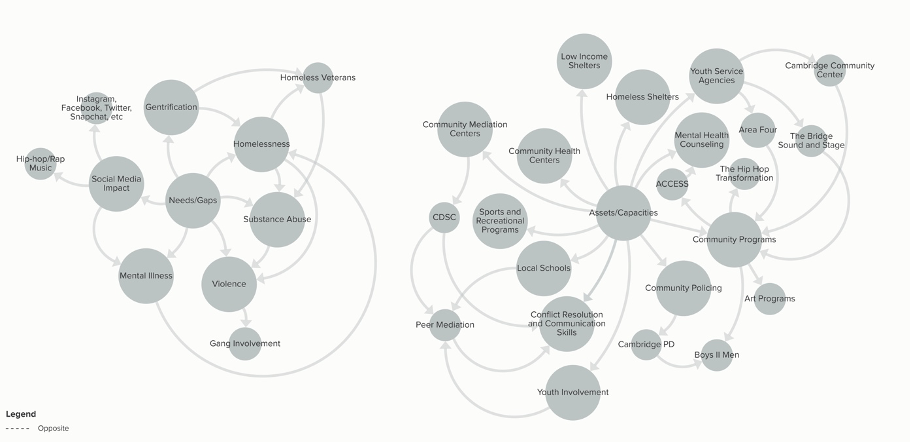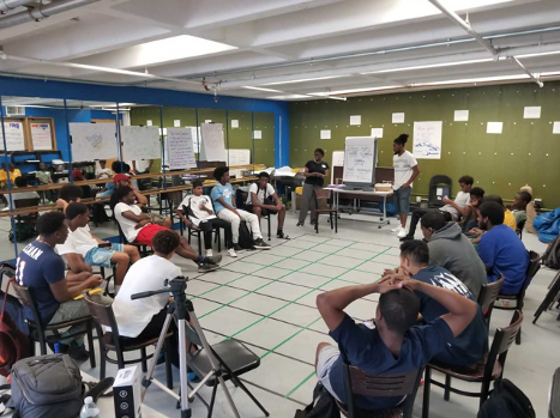Hi! I’m Madhawa “Mads” Palihapitiya, an evaluator, researcher and teacher from UMass Boston who has been using digital images for program evaluation for over half-a-decade.
It was the anthropologists, visual sociologists and arts-based researchers who first used photographs for research. Since then, the use of digital images has gained status in evaluation as an “authentic source” or “empirical account” of data. As evaluators, we have used PhotoVoice to focus on the perspective of those whose lives are being affected by the programs and/or policies we evaluate.
What makes photos valuable to me is their capacity to address power imbalances. As my approach is value laden, I see my role as an evaluator to be that of a facilitator – empowering communities to provide “authentic” data for the evaluation. Photographic evaluation can help by documenting social change, facilitating sense-making, and inspiring and imagining social change. Documenting social change helps ensure accountability.
Hot Tip: Use digital images and facilitated group sense-making to conduct a number of evaluations including needs assessments and asset/capacity-building, performance monitoring or Most Significant Change (MSC).

Figure 1: Needs & Assets on Youth Violence Mapped Through PhotoVoice
I have also found photographic evaluation and facilitated sense-making to increase community engagement in evaluation as power imbalance inherent in some of the traditional data collection methods like surveys is addressed through facilitated sense-making resulting in higher quality, much more creative, deliberative and nuanced qualitative data collection.
Hot Tip: Consider structured large-group sense-making using a photo-elicitation method like SHOWeD.
In my evaluation practice, participants are encouraged to generate their own image(s), and to use those images to name and frame issues, identify needs and assets, define social change objectives and provide input on the value of the program and/or policy being evaluated. Participants can engage in defining not just the “what is” and “what should be” but also “what is already available” (the assets). This process is enhanced by the images that spur participants to imagine or reimagine social change.
Group sense-making also enables appreciative inquiry, which is a cornerstone of asset/capacity-building. This helps avoid an overemphasis of needs or “what’s missing” in needs assessment. This ensures that evaluators can also focus on strengths/assets already inherent in a community.
Below is a photo of from a Summer Youth Center program on this topic, an example of how a youth, spurred on by her own photo of her community, identified particular programs in her school as an asset during a sense-making discussion:
“I feel like in school they give you a lot of career paths that you can go in. So, help you if you are struggling, and what career you want to be in—this is what you can do. So, they have a lot of cool classes you can take like “health assisting” or “technology classes”, so I think that is really working.”

The American Evaluation Association is celebrating Needs Assessment (NA) TIG Week with our colleagues in the Needs Assessment Topical Interest Group. The contributions all this week to aea365 come from our NA TIG members. Do you have questions, concerns, kudos, or content to extend this aea365 contribution? Please add them in the comments section for this post on the aea365 webpage so that we may enrich our community of practice. Would you like to submit an aea365 Tip? Please send a note of interest to aea365@eval.org. aea365 is sponsored by the American Evaluation Association and provides a Tip-a-Day by and for evaluators.

Pingback: Photography and Evaluation with Madhawa Palihapitiya - Glass FrogGlass Frog
Truly fantastic post Mads! Thank you for such wonderful information about needs assessment. Two things that I really love about your post:
1.) that you talked about the power of photovoice
2.) that you discuss Most Significant Change (MSC)
Thank you again for the excellent post!
Cheers,
Sondra
Sondra LoRe, Ph.D.
Manager | National Institute for STEM Evaluation and Research (NISER)
Adjunct Professor | Evaluation, Statistics, and Measurement Program, Department of Educational Psychology & Counseling
The University of Tennessee, Knoxville
Office of Research & Engagement
114 Philander P. Claxton Education Building
slore@utk.edu
Many thanks Sondra!